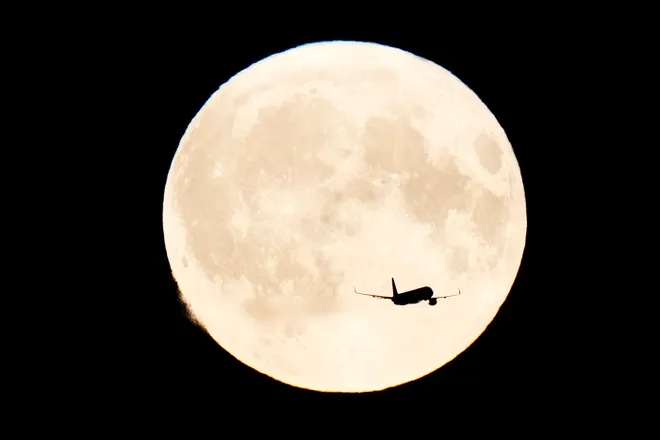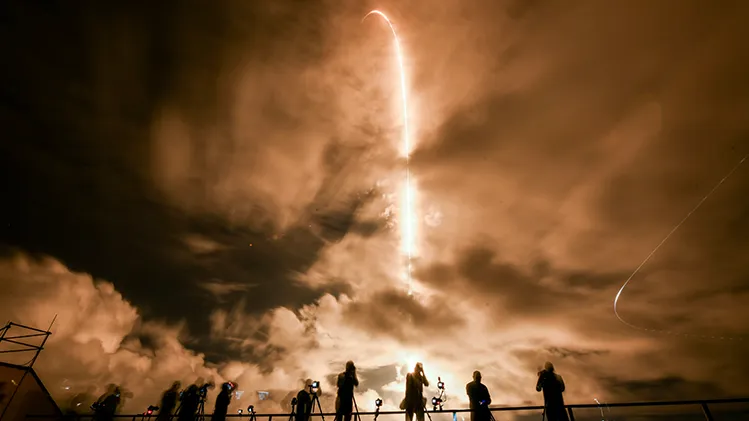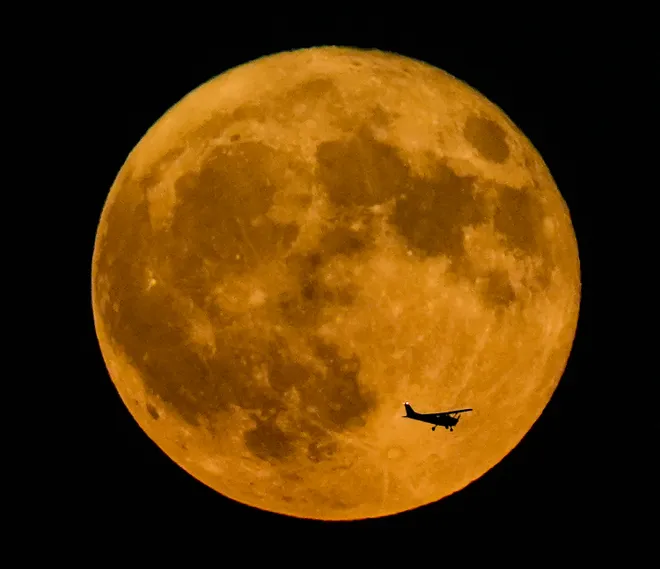September 2024 full moon is a supermoon and harvest moon: When to see it
Moon watchers will get a special treat this month: September's full "harvest" moon is also a supermoon, meaning it's slightly bigger and brighter than an average moon.
The full moon will be Tuesday night, September 17, 2024, at 10:35 p.m. EDT, NASA reports. The moon will appear full for about three days, from Monday evening through Thursday morning.
In addition, on the night of the full moon, there will be a partial lunar eclipse, adding to the skywatching fun.

Why is it called the 'harvest' moon?
The harvest moon is the full moon that occurs closest to the autumnal equinox, which this year is Sept. 22.
The harvest moon's name has long been tied to when crops need to be picked from the fields. "In the days before tractors with headlights, having moonlight to work by was crucial to getting the harvest in quickly before rain caused it to rot," said Alan MacRobert, an editor at Sky & Telescope magazine.
Many crops ripen in late summer and early autumn, so farmers were extremely busy at this time of year and had to work after sundown, according to NASA. Moonlight became an essential part of farming, and the harvest moon was born.
The Oxford English Dictionary cites 1706 as the first year the term "harvest moon" was published, NASA says.

Why is it a 'supermoon'?
When the moon’s orbit brings it closer to Earth than usual, the cosmic combo is called a supermoon.
When this happens, the moon can appear slightly bigger and brighter than normal.
"Different publications use slightly different thresholds for deciding when a full moon is close enough to the Earth to qualify as a supermoon," NASA says. "Because the orbit of the moon is not a perfect circle, the moon is sometimes closer to the Earth than at other times during its orbit."
On average, supermoons appear about 7% bigger and about 15% brighter than a typical full moon.
This is the second of four straight supermoons: After Sept. 17, the next supermoons are Oct. 17 and Nov. 15.

September full moon also brings partial lunar eclipse
A lunar eclipse occurs when the Earth’s shadow falls on the moon, either dimming it or turning it a striking red over the span of a few hours, according to NASA. The partial lunar eclipse on Sept. 17 will result from an imperfect alignment of the sun, moon and Earth, so only part of the moon will be covered by the Earth’s shadow.
The moment of greatest eclipse Tuesday will be 10:44 p.m. ET. At that moment, the top 8 percent of the moon will be in full shadow.
The next total lunar eclipse visible from the Americas will be on March 14, 2025.
Contributing: Steve Howe, The Rochester Democrat and Chronicle
Disclaimer: The copyright of this article belongs to the original author. Reposting this article is solely for the purpose of information dissemination and does not constitute any investment advice. If there is any infringement, please contact us immediately. We will make corrections or deletions as necessary. Thank you.





